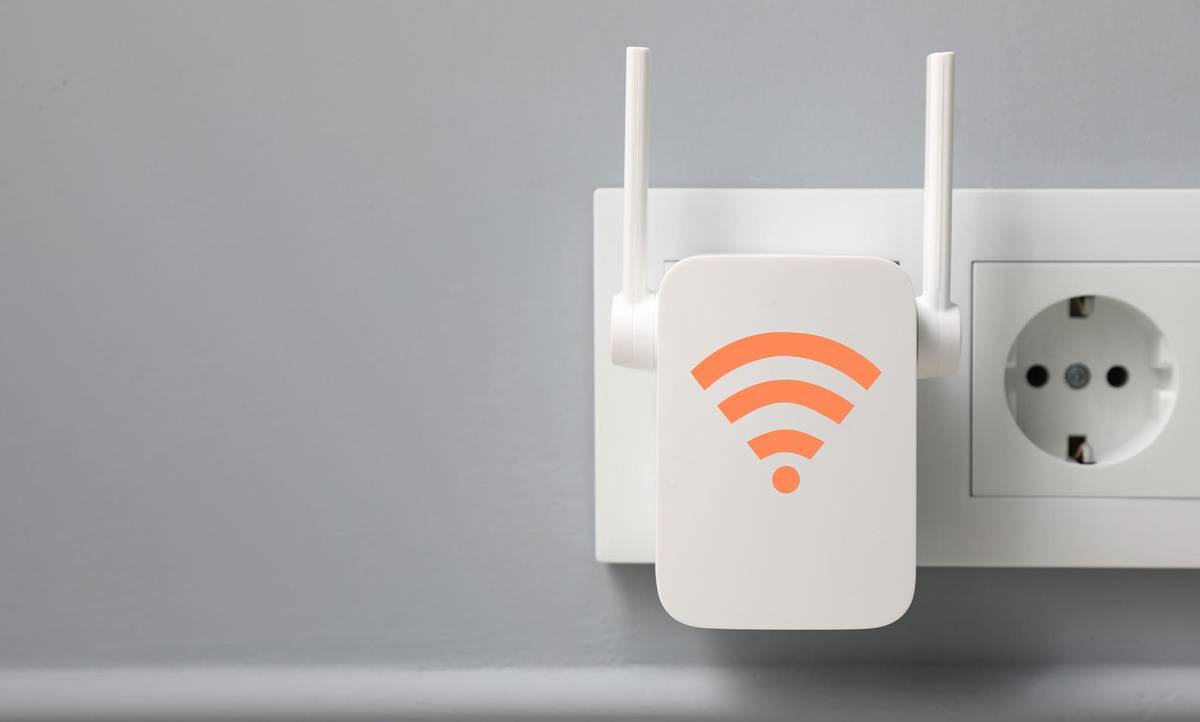Wi-Fi boosters
Wi-Fi boosters (also known as Wi-Fi extenders or repeaters) are devices designed to improve wireless coverage by amplifying and retransmitting your router’s Wi-Fi signal. These are useful if you have dead zones or areas where the signal is weak.
How to get Wi-Fi boosters
Many broadband providers supply Wi-Fi boosters. Either as part of their service or as whole-home Wi-Fi solution add-ons.
You can also purchase third-party Wi-Fi boosters from retailers such as Amazon or Currys, often with more advanced features like dual-band support and mesh networking compatibility.
Pros of Wi-Fi Boosters:
- Easy to set up — often just plug in and connect
- Affordable solutions available from most electronics retailers
- Can improve Wi-Fi coverage in hard-to-reach areas
Negatives of Wi-Fi boosters:
- Can cause reduced speeds as they rebroadcast the signal
- May not work well in very large homes with thick walls
- Requires a strong enough existing Wi-Fi signal to extend effectively
Powerline network adapters
If you haven’t heard of powerline network adapters, you’re not alone. They seem to be gradually getting phased out by providers and replaced with boosters and mesh systems. But these gadgets can still work in their own way to help improve Wi-Fi signal in your home.
Powerline adapters use your home’s electrical wiring to transmit internet signals, creating a wired or wireless network in areas where Wi-Fi is weak. They come in pairs: one adapter plugs into a power socket near your router and connects via ethernet, while the other adapter plugs into a socket in the target location.
Their performance can really vary because it all depends on how good your home’s electrical circuit is. If it’s dated or not optimised, you probably won’t get the speeds you desire. This is one reason that providers aren’t keen to offer them as part of their broadband package. You’re best off purchasing them from Amazon or any high street electrical store.
How powerline adapters work
Instead of relying on wireless signals, powerline adapters convert the internet signal into electrical signals, which travel through your home’s wiring before being converted back into data at the receiving end. Some models also include Wi-Fi functionality, providing both wired and wireless options.
Pros of powerline adapters:
- Fast and stable wired connections with no risk of Wi-Fi dropouts
- No set-up or installation process, just plug in
- Works well in homes with thick walls that block Wi-Fi.
Cons of powerline adapters:
- Performance depends on the quality of your home’s electrical wiring
- Can be less effective in older homes or those with multiple circuits - they require single electrical circuits
- Speed is lost along the way
Using Wi-Fi boosters and powerline adapters together
Using both Wi-Fi boosters and powerline adapters in combination can be a good strategy to extend your network reach in certain situations. This setup works well in larger homes or those with challenging layouts where a single solution may not be sufficient.
How to set them up together:
- Install a powerline adapter – Connect one powerline adapter to your router via ethernet and plug it into a power outlet. Place the second powerline adapter in a distant room where a more stable internet connection is needed.
- Connect a Wi-Fi booster – If the powerline adapter does not include built-in Wi-Fi, you can connect a Wi-Fi booster to the second powerline adapter via Ethernet. This will create a strong wireless access point at the new location.
- Optimise placement – Position the Wi-Fi booster in an area where it can efficiently distribute the signal without interference.
- Test and adjust – Ensure both devices are properly configured, check for signal strength, and reposition them if necessary for the best performance.
Future proof with a mesh network system
While Wi-Fi boosters and powerline adapters can improve connectivity, a mesh network system may be the most effective and seamless option for ensuring strong, consistent coverage throughout your home, especially if it’s on the larger size. This is becoming the method of choice for most households and it’s the one that most providers look to when offering a whole-home Wi-Fi solution.
Whilst a Wi-Fi booster is the simpler and cheaper option – you just plug it into an outlet and connect it to your existing router – a mesh router will do a better job of boosting speeds throughout your whole home. A Wi-Fi booster simply repeats the signal from your router, whilst a mesh system creates a network of nodes that communicate with each other to optimise signal strength throughout your space.
What are mesh routers?
A mesh router system is a network of multiple routers working together to provide strong and consistent Wi-Fi coverage across your home. Unlike a standard single-router setup, which can struggle to reach every corner of a property, mesh systems use multiple access points – often called ‘nodes’ or ‘satellites’ – to distribute the Wi-Fi signal more effectively.
Find out more about mesh routers




